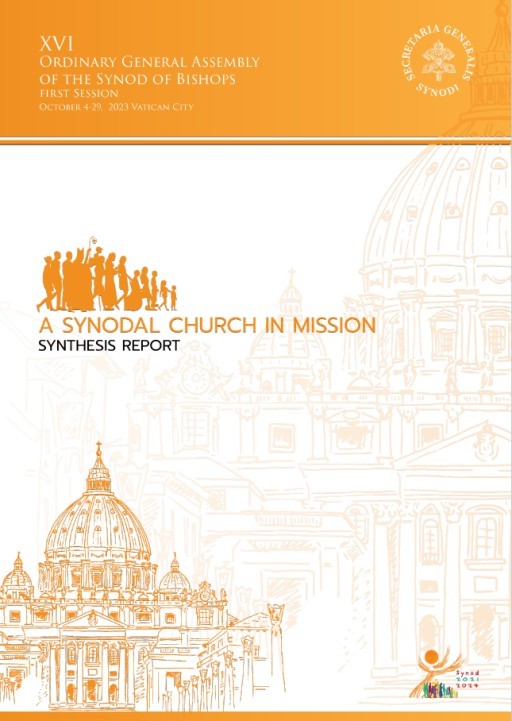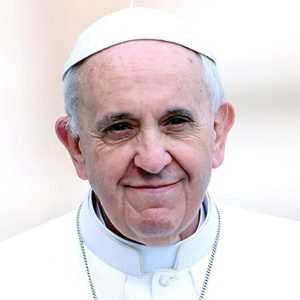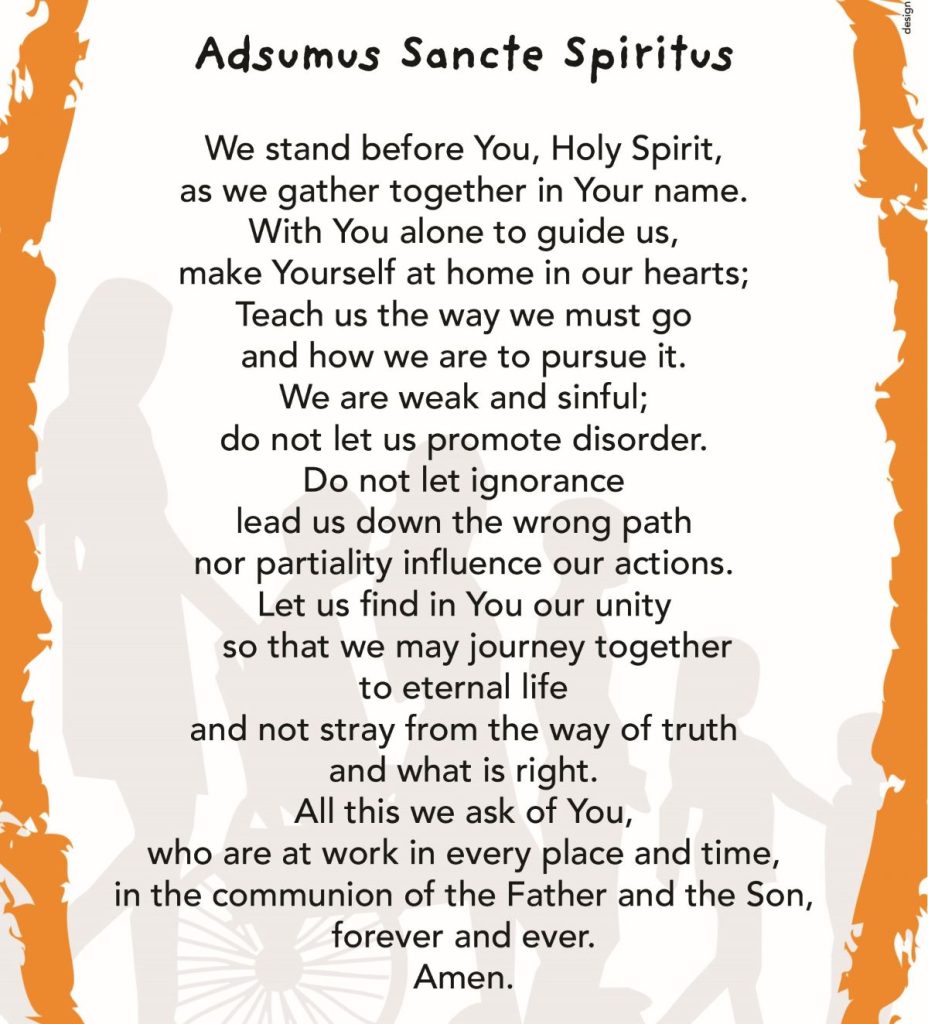From the Cardinal: Mary Magdalen: The First Witness, Apostle of the Risen Lord| April 19, 2024
Click a button to jump to the section:

Vol. 5. No. 15
My dear sisters and brothers in Christ,
Christ is risen; he is truly risen!
When we began our Easter celebration three weeks ago, St. John’s Gospel (Jn 20:1-8) related the following remarkable occurrence:
On the first day of the week, Mary of Magdala came to the tomb early in the morning, while it was still dark, and saw the stone removed from the tomb. So, she ran and went to Simon Peter and to the other disciple whom Jesus loved, and told them, “They have taken the Lord from the tomb, and we don’t know where they put him.”
So Peter and the other disciple went out and came to the tomb. They both ran, but the other disciple ran faster than Peter and arrived at the tomb first; he bent down and saw the burial cloths there, but did not go in.
When Simon Peter arrived after him, he went into the tomb and saw the burial cloths* there, and the cloth that had covered his head, not with the burial cloths but rolled up in a separate place. Then the other disciple also went in, the one who had arrived at the tomb first, and he saw and believed. For they did not yet understand the scripture that he had to rise from the dead.
Then the disciples returned home. But Mary stayed outside the tomb weeping.f And as she wept, she bent over into the tomb and saw two angels in white sitting there, one at the head and one at the feet where the body of Jesus had been. And they said to her, “Woman, why are you weeping?” She said to them, “They have taken my Lord, and I don’t know where they laid him.”
When she had said this, she turned around and saw Jesus there, but did not know it was Jesus. Jesus said to her, “Woman, why are you weeping? Whom are you looking for?”h She thought it was the gardener and said to him, “Sir, if you carried him away, tell me where you laid him, and I will take him.”
Jesus said to her, “Mary!” She turned and said to him in Hebrew, “Rabbouni,”* which means Teacher. Jesus said to her, “Stop holding on to me, for I have not yet ascended to the Father. But go to my brothers and tell them, ‘I am going to my Father and your Father, to my God and your God.’” Mary of Magdala went and announced to the disciples, “I have seen the Lord,” and what he told her.
The first person to discover that the tomb was empty was Mary Magdalen. Peter and the disciple Jesus loved were the first to inspect this empty tomb, but they were not the first to encounter the risen Jesus. That honor, St. John tells us, was reserved for Mary Magdalen.
Among the holy women who were faithful to Jesus to the end, Mary Magdalen stands out. Not only was she present at the Passion, but she was also the first witness and herald of the Risen One. As a result of her personal encounters with Jesus over the years, and especially on the day of his resurrection, Mary Magdalen became a powerful witness to the risen Lord. St. Thomas Aquinas called her the “Apostle of the Apostles.”
The 2023 Synod Synthesis Report (see selection below) underscores the equal dignity and complementary roles of women and men in the Church, advocating for women’s active participation and leadership. The report calls for dialogue and collaboration between men and women to advance the Church’s mission without subordination or competition. It reminds us that “In Christ, women and men are clothed with the same baptismal dignity (Gal 3:28) and receive equally the variety of gifts of the Spirit. We are called together into a communion of loving, noncompetitive relationships in Christ and to a co-responsibility to be expressed at every level of the Church’s life.”
Mary Magdalen models this noncompetitive, co-responsible relationship. She remains an Apostle to all of us who can listen with our hearts and see with the eyes of faith.
In his impromptu remarks quoted below, Pope Francis admonishes us, saying: “The Church is woman. And if we do not know what a woman is, what the theology of a woman is, we will never understand what the Church is.” These are strong words, especially at a time when there is much confusion and disagreement about gender roles and identity.
To say that the Church is a woman is to identify her with “Mary of Nazareth, woman of faith and Mother of God,” who, as the Synod Synthesis Report says, “remains for all a unique source of theological, ecclesial and spiritual meaning” because she “reminds us of the universal call to listen attentively to God and to remain open to the Holy Spirit.”
But the Church is also a woman like Mary of Magdala. Sacred Scripture tells us that Mary Magdalen had a troubled past and that her encounters with Jesus were transformational (cf. Luke 8:2, Mark 16:9). By reflecting on Mary Magdalen’s relationship with Jesus and his disciples, we can better understand how a group of sinners is able to grow in holiness and collaborate with one another in spite of their differences and disagreements to build up the Kingdom of God.
St. John tells us that Mary went and announced to the disciples, “I have seen the Lord!” This is the message that the Church—all of us who have been baptized—is commanded to share with all nations and peoples. We carry out this mission more effectively when recognizing that women are indispensable to the life of our Church. As the Synod Synthesis Report says, “The long history of women missionaries, saints, theologians and mystics is a powerful source of nourishment and inspiration for women and men today.” We cannot understand the Church if we minimize or deny her feminine identity.
As we continue this Easter season, let’s reflect on the Synod’s call to “promote a Church in which men and women dialogue together, in order to understand more deeply the horizon of God’s project, that sees them together as protagonists, without subordination, exclusion and competition.” Through the intercession of the Blessed Virgin Mary and St. Mary Magdalen, may women continue to be recognized as co-responsible leaders and missionary disciples at every level of our vibrant Church’s life.
Sincerely yours in Christ the Redeemer,
Cardinal Joseph W. Tobin, C.Ss.R.
Archbishop of Newark

A Synodal Church in Mission: Synthesis Report
A Selection from the Synod Synthesis Report’s Part II: All Disciples, All Missionaries #9 “Women in the Life and Mission of the Church.”
We are created, male and female, in the image and likeness of God. From the beginning, creation manifests unity and difference, bestowing on women and men a shared nature, calling, and destiny, and two distinct experiences of being human. Sacred Scripture testifies to the complementarity and reciprocity of women and men, and to the covenant between them that lies at the heart of God’s design for creation. Jesus considered women his interlocutors: he spoke with them about the Kingdom of God; he welcomed them as disciples, as for example, Mary of Bethany. These women, who experienced His power of healing, liberation and recognition, traveled with Him on the road from Galilee to Jerusalem (Lk 8,1-3). He entrusted the announcement of the Resurrection on Easter morning to a woman, Mary Magdalene.
In Christ, women and men are clothed with the same baptismal dignity (Gal 3:28) and receive equally the variety of gifts of the Spirit. We are called together into a communion of loving, noncompetitive relationships in Christ, and to a co-responsibility to be expressed at every level of the Church’s life. We are, as Pope Francis said to us together, “a people convened and called with the strength of the Beatitudes.”
We have had a very positive experience of the reciprocity between women and men during this Assembly. Together we echo the call made in the previous phases of the synodal process, that the Church adopt a more decisive commitment to understand and accompany women from a pastoral and sacramental point of view. Women desire to share their spiritual experience of journeying towards holiness in the various stages of life: as young women, as mothers, in their friendships and relationships, in family life at all ages, in working life, and in consecrated life. Women cry out for justice in societies still marked by sexual violence, economic inequality and the tendency to treat them as objects. Women are scarred by trafficking, forced migration and war. Pastoral accompaniment and vigorous advocacy for women should go hand in hand.
Women make up most of those in our pews and are often the first missionaries of the faith in the family. Consecrated women, both in contemplative and apostolic life, are a fundamental and distinctive gift, sign and witness in our midst. The long history of women missionaries, saints, theologians and mystics is also a powerful source of nourishment and inspiration for women and men today.
Mary of Nazareth, woman of faith and Mother of God, remains for all a unique source of theological, ecclesial and spiritual meaning. Mary reminds us of the universal call to listen attentively to God and to remain open to the Holy Spirit. She knew the joy of bearing and nurturing and endured pain and suffering. She gave birth in impoverished conditions, became a refugee and lived the sorrow of her Son’s brutal killing, but she also knew the magnificence of his Resurrection and the glory of Pentecost.
Many women expressed deep gratitude for the work of priests and bishops. They also spoke of a Church that wounds. Clericalism, a chauvinist mentality and inappropriate expressions of authority continue to scar the face of the Church and damage its communion. A profound spiritual conversion is needed as the foundation for any effective structural change. Sexual abuse and the abuse of power and authority continue to cry out for justice, healing and reconciliation. We asked how the Church can be a place that safeguards all.
Where dignity and justice are undermined in relationships between men and women in the Church, we weaken the credibility of our proclamation to the world. Our synodal path shows the need for relational renewal and structural changes. In this way we can better welcome the participation and contribution of all – with lay and consecrated women and men, deacons, priests, and bishops – as co-responsible disciples in the work of mission.
The Assembly asks that we avoid repeating the mistake of talking about women as an issue or a problem. Instead, we desire to promote a Church in which men and women dialogue together, in order to understand more deeply the horizon of God’s project, that sees them together as protagonists, without subordination, exclusion and competition.

A Message from Pope Francis: Words of Challenge and Hope
(A selection from the impromptu remarks of Pope Francis to members of the International Theological Commission, as reported by the Holy See Press Office November 30, 2023.)
Impromptu words of the Holy Father
Thank you for what you do. Theology, theological reflection, is very important. But there is something about you that I do not like; pardon my sincerity. One, two, three, four women: poor women! They are alone! Ah, excuse me, five. We must advance in this. Women have a capacity for theological reflection that is different to that of us men. It will be because I have studied the theology of a woman a great deal. I was helped by a good German woman, Hanna-Barbara Gerl, on Guardini. She had studied that history and the theology of that woman was not so deep, but it is beautiful, it is creative. And now, in the upcoming meeting of the nine Cardinals, we will reflect on the feminine dimension of the Church.
The Church is woman. And if we do not know what a woman is, what the theology of a woman is, we will never understand what the Church is. One of the great sins we have had is to “masculinize” the Church. And this is not solved by the ministerial path; that is something else. It is resolved in the mystical way, the real way. Balthasar’s thought has brought me so much light: Petrine principle and Marian principle. This can be debated, but the two principles are there. The Marian is more important than the Petrine, because there is the bride Church, the woman Church, without being masculine.
And you will ask me: where does this discussion lead? Not only to tell you that you should have more women here – that is one thing – but to help reflect. The Church as woman, the Church as a bride. And this is a task that I ask of you, please. To make the Church less masculine.
My Prayer for You

Please join me in praying this Synod Prayer, Adsumus Sancte Spiritus:
We stand before you, Holy Spirit, as we gather together in Your name. With You alone to guide us, make Yourself at home in our hearts; Teach us the way we must go and how we are to pursue it. We are weak and sinful; do not let us promote disorder. Do not let ignorance lead us down the wrong path, nor partiality influence our actions. Let us find in You our unity so that we may journey together to eternal life and not stray from the way of truth and what is right. All this we ask of You, who are at work in every place and time, in the communion of the Father and the Son, forever and ever. Amen.
